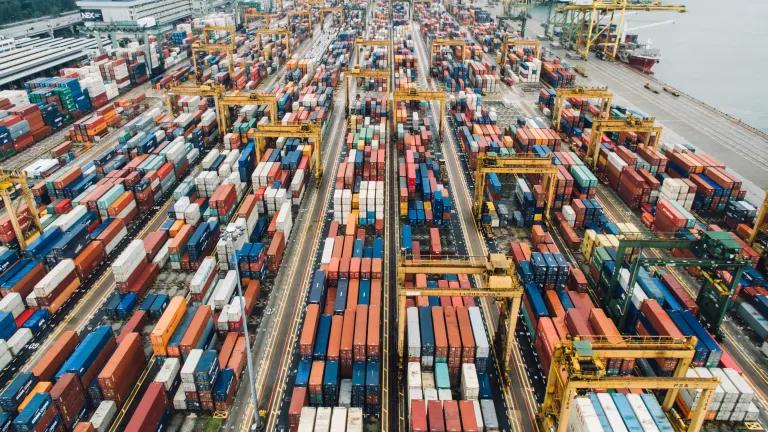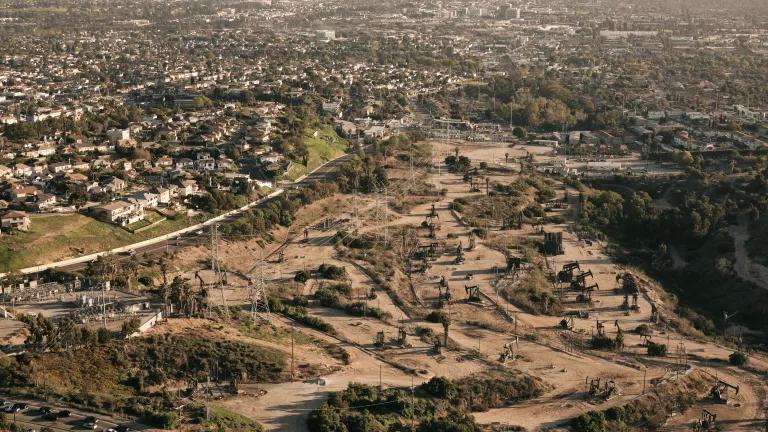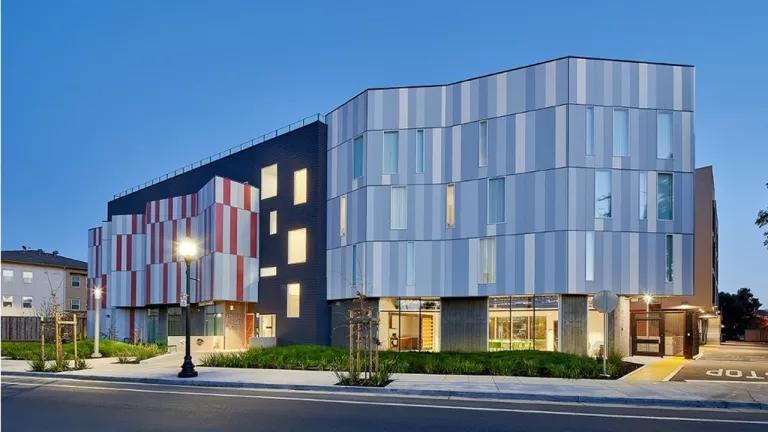Proposed Port Expansion Puts South Oxnard Community at Risk
Five reasons the Environmental Impact Report is incomplete.

GLOVIS ship carrying cars to the Port of Hueneme
The Port of Hueneme is running out of room to process its growing cargo volumes within its borders. Now, the Port is threatening to take over land in the South Oxnard community that has long been envisioned as a park, to facilitate a major increase in automobile imports for customer Hyundai GLOVIS.
This comes at a time when shipping companies like GLOVIS are making record profits and the Port of Hueneme is welcoming more ships and cargo that would normally move through the Ports of Los Angeles and Long Beach. These increased port operations threaten to expose the community to higher levels of air and noise pollution, and further industrialize the community, cutting off coastal access.
A week before Christmas, the City of Oxnard gifted its residents with a draft study of a proposed 34-acre car lot where Hyundai GLOVIS plans to store nearly 5,000 cars for five years. While the study (also called an Environmental Impact Report, or EIR) states that the project will not have significant impacts on the community or environment, the analysis is legally deficient and incomplete. NRDC joins a coalition of organizations that are calling for Oxnard to study the full impacts of the GLOVIS project and consider all alternatives that will eliminate or mitigate significant impacts. This must also be carried out in a transparent way, such that the communities that will face the brunt of these impacts are able to fully weigh in and elevate their needs and priorities.
Oxnard is made up of 85% people of color, with 84% of residents without a college education, and 68% speaking a language other than English at home. In the neighborhoods directly adjacent to the proposed GLOVIS project live almost 5,000 children under 10 years old, a large farmworker population already facing pesticides exposure at work, and members of the indigenous Mixteco community. It is hard to imagine that this same flawed analysis would be applied to a similar study in other neighboring coastal communities like Malibu, Santa Monica and Santa Barbara.
Here are five major ways the draft EIR is incomplete:
1. It fails to consider planned port expansions
The true scale of the “temporary” GLOVIS project and its potential impact on surrounding communities can only be fully understood by looking at the other projects that will allow for more goods and cargo to move through the port into south Oxnard. This includes the Port’s plans to deepen its harbor, which will allow larger ships to bring increased goods into the Port, and plans to develop additional larger car and cargo storage sites at the Port’s North Terminal and down the road in incorporated Ventura County.
In documents revealed by a public record request submitted by NRDC and CAUSE, the Port has described in detail its plan to acquire and use a 250-acre property less than a mile from the GLOVIS project for use as a Multimodal Logistics Park as part of its strategic plan to expand port capacity. The Port has also applied for federal funding to build an on-dock car storage structure for three years in a row.
The draft EIR fails to mention any of these projects at all, even though the GLOVIS project is intended to facilitate more cargo by bringing in an estimated 60,000 more cars. The project itself may be “temporary,” but the cargo growth will not be and the draft EIR must analyze the impacts from more vehicles and other goods traveling through south Oxnard by truck and rail. By ignoring the Port’s plans for expansion, the EIR leaves out important ways the surrounding community and environment may be impacted permanently by the project.
2. It downplays traffic and air quality impacts
The study ignores the pollution created by more cars traveling from the port by rail and truck, and by more ships traveling to the port. The pollution from ships is especially important to consider because the North Terminal where cars arrive is not electrified according to the Port’s 2019 draft electric master plan, so the ships carrying cars will be running their diesel engines when docked at the Port. Most heavy-duty trucks and ships currently use diesel fuel that contains higher levels of particulate matter compared to ordinary gasoline, resulting in greater health harms to the surrounding community.

CAUSE youth members have been leading truck counts near the proposed project site to better understand the existing impacts from trucks and vehicles
3. It is inconsistent with Oxnard’s land use plans
This area has long been envisioned by the surrounding community as a Gateway Park that would provide residents access to Ormond Beach, a unique and precious wetland habitat right in their backyard. The City acknowledges this in its 2030 General Plan by designating part of this land as park space. The GLOVIS project would lie right between south Oxnard neighborhoods and the Ormond Beach wetlands, which are being restored for a public green space for the community to enjoy and take their families. How will more polluting, loud, and dangerous port traffic along Hueneme Road impact the safety of accessing Ormond Beach?

Community members enjoying the Ormond Beach wetlands
This “temporary” project would likely prevent this land from becoming the Gateway Park and remove valuable habitat for the wildlife in the adjacent wetlands and waterways. Laying gravel instead of concrete is portrayed as a way to allow the site to transition into the Gateway Park in the future, but using the site to park 60,000 cars over five years will degrade the soil and make it unusable as equivalent habitat for important species like the burrowing owl. Dr. Shawn Smallwood, an expert who reviewed the draft EIR found that the project could deny California approximately 190,720 birds over the next century due to habitat loss, vehicle collisions, and the impacts from artificial lighting. Furthermore, while some parts of the project will be taken down after five years, the 6-foot fencing will remain. This will permanently block the surrounding community from the coast and will continue to disturb wildlife from the adjacent wetland.

Double-crested cormorant, protected under the California Department of Fish and Wildlife Special Animals List, flying over the site
4. It fails to consider all feasible alternatives
The DEIR doesn’t properly consider alternatives that would be aligned with community priorities, such as: storing cars at the naval base instead of in the community; using zero-emission trucks to carry cars to existing storage sites; and establishing a park at the 34-acre site.
5. It fails to provide meaningful information to the public
California law requires that these types of environmental studies inform the public and provide them with an opportunity to inform decision-making. The draft EIR’s inadequate analysis is not only legally deficient, but also fails to comply with the spirit of the law. The City of Oxnard refused to grant an extension requested by the coalition and 60 community members, and also ignored requests for a public hearing and translated materials beyond the executive summary. A public hearing is especially important for those in the community who cannot read English or Spanish, such as some members of the Mixteco community.
Take action
For these reasons, the City of Oxnard must recirculate a new draft EIR that studies the full impacts of the project and analyzes all necessary alternatives and mitigation measures. The public can submit comments to raise concerns about the project and ask the City to redo its environmental analysis by 5:00pm on Monday, February 14.
This blog provides general information, not legal advice. If you need legal help, please consult a lawyer in your state.



